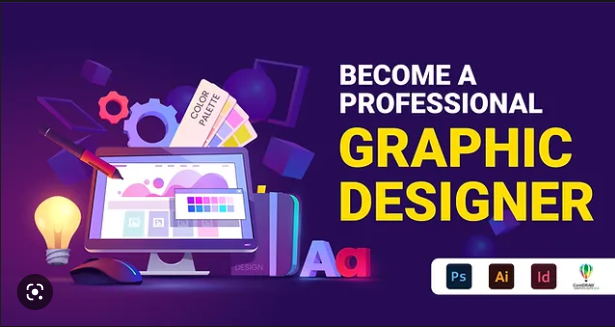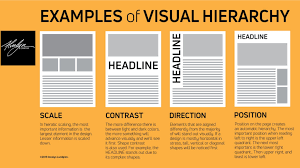Graphic designing is a creative process that involves combining text, images, and other visual elements to communicate a message effectively. It is an art form that requires a combination of technical skills and creativity to produce visually appealing designs. Graphic design can be used for various purposes such as advertising, branding, web design, packaging, and more.
1. Introduction to Graphic Designing
In today's digital age, graphic designing has become an essential part of marketing and communication strategies. With the increasing demand for high-quality designs, mastering the art of graphic designing has become crucial for designers and marketers alike.
In this comprehensive tutorial, we will cover the fundamental aspects of graphic designing, including the elements of design, color theory, typography, visual hierarchy, and project success.
Whether you are a beginner or an experienced designer, this graphic designing tutorial will provide you with valuable insights and practical tips to enhance your skills and create stunning designs. So, let's dive into the world of graphic designing and explore the key concepts that make up this fascinating art form.
2. Understanding the Elements of Design
Design is a visual language that communicates ideas, emotions, and information through the use of various elements. Understanding these elements is crucial to mastering the art of graphic designing. The elements of design include line, shape, form, texture, space, and color.
Line is the most basic element of design. It can be straight or curved, thick or thin, and can create different moods and emotions in a design. Shape refers to the two-dimensional area created by lines and can be geometric or organic.
Form, on the other hand, is the three-dimensional aspect of a shape. Texture adds depth and dimension to a design and can be tactile or visual. Space refers to the area between and around objects in a design and can create a sense of depth and perspective.
Color is perhaps the most powerful element of design. It can evoke emotions, convey messages, and create a mood. Choosing the right color palette is essential to creating a successful design. Warm colors like red, orange, and yellow are associated with energy and excitement, while cool colors like blue, green, and purple are calming and soothing. Neutral colors like black, white, and gray can add sophistication and elegance to a design.
Understanding the elements of design is the foundation for creating effective and visually appealing designs. By using these elements in creative and innovative ways, you can communicate your message effectively and leave a lasting impression on your audience.
3. Choosing The Right Color Palette
Color is one of the most important aspects of graphic design. It can evoke emotions, convey a message, and create a mood. Choosing the right color palette for your design is crucial to its success.
When selecting colors, it's important to consider the purpose of your design and the audience you're targeting. Different colors have different meanings and associations in different cultures, so it's essential to research and understand the cultural significance of colors before making your final decision.
Another important factor to consider is color contrast. Colors that are too similar can make your design appear flat and uninteresting, while colors that are too contrasting can be overwhelming and difficult to read. A good rule of thumb is to choose colors that are complementary or adjacent on the color wheel.
It's also important to keep in mind the psychology of color. Certain colors can evoke specific emotions and feelings. For example, blue is often associated with trust and professionalism, while red can evoke passion and excitement. Understanding the psychology of color can help you choose the right colors to convey the message you want to communicate.
In summary, choosing the right color palette is essential to creating a successful design. Consider the purpose of your design, your target audience, color contrast, and the psychology of color when making your selection.
4. Typography Basics for Effective Communication
Typography is a crucial aspect of graphic design that can make or break the effectiveness of your message. It involves the art and technique of arranging type to make written language legible, readable, and appealing when displayed.
When selecting typography for your design, it's important to consider the tone and purpose of your message. Serif fonts, such as Times New Roman, are often used for more traditional and formal designs, while sans-serif fonts, like Arial, are commonly used for modern and clean designs.
Additionally, font size and spacing play a significant role in readability. Too small of a font size can make it difficult for readers to read, while too much spacing between letters can make the text look disjointed.
It's also essential to pay attention to the hierarchy of your typography. The most important information should be emphasized with larger font sizes, bolding, or different colors. This helps guide the reader's eye and ensures that they understand the most critical points of your message.
Overall, typography is a powerful tool that can enhance the effectiveness of your design. By choosing the right fonts, sizes, and spacing, you can create a visually appealing and easy-to-read message that effectively communicates your intended meaning.
5. Creating Visual Hierarchy in Your Designs
Visual hierarchy is a crucial aspect of graphic design that helps guide the viewer's eye through the design and communicate the intended message effectively. It involves arranging the elements in a design in a way that creates a clear and organized flow of information.
One of the most effective ways to create visual hierarchy is by using size, color, and contrast. Larger elements tend to grab more attention than smaller ones, so you can use this to your advantage by making the most important elements larger than the rest. Similarly, contrasting colors can help draw attention to specific areas of the design.
Another way to create visual hierarchy is by using white space strategically. White space, also known as negative space, refers to the empty spaces between elements in a design. By leaving some areas blank, you can create a sense of balance and make the other elements stand out more.
It's also important to consider the order in which the viewer will see the elements in your design. This can be influenced by the layout, placement, and proximity of the elements. You want to make sure that the most important elements are placed where they will be seen first and that the viewer's eye is guided through the design in a logical and intuitive way.
Creating visual hierarchy is all about organizing the elements in your design in a way that communicates the intended message clearly and effectively. By using size, color, contrast, white space, and careful placement, you can guide the viewer's eye through the design and create a strong visual impact.
6 Tips for Successful Graphic Designing Projects
When it comes to graphic designing projects, success depends on more than just your technical skills.
Here are some tips to help you achieve success in your projects:
1. Understand the client's needs
Before starting any project, make sure you understand what the client wants. Ask questions and clarify any doubts you may have.
2. Set realistic deadlines
Be honest with yourself and your client about how long a project will take. Don't promise something you can't deliver.
3. Plan your work
Create a plan or a roadmap for your project. This will help you stay organized and focused.
4. Communicate effectively
Keep your client informed about the progress of the project. Regular updates will help build trust and prevent any surprises.
5. Be open to feedback
Listen to your client's feedback and be willing to make changes if necessary. Remember, the goal is to create a design that meets their needs.
6. Pay attention to detail
Details matter in graphic designing. Make sure you double-check everything before submitting the final product.
By following these tips, you can ensure that your graphic designing projects are successful and meet the client's expectations.
😎 Top 7 Tips for Finding Inspiration for Graphic Designing
✍ Most Trending Tools for YouTubers For Animated Intros










0 Comments